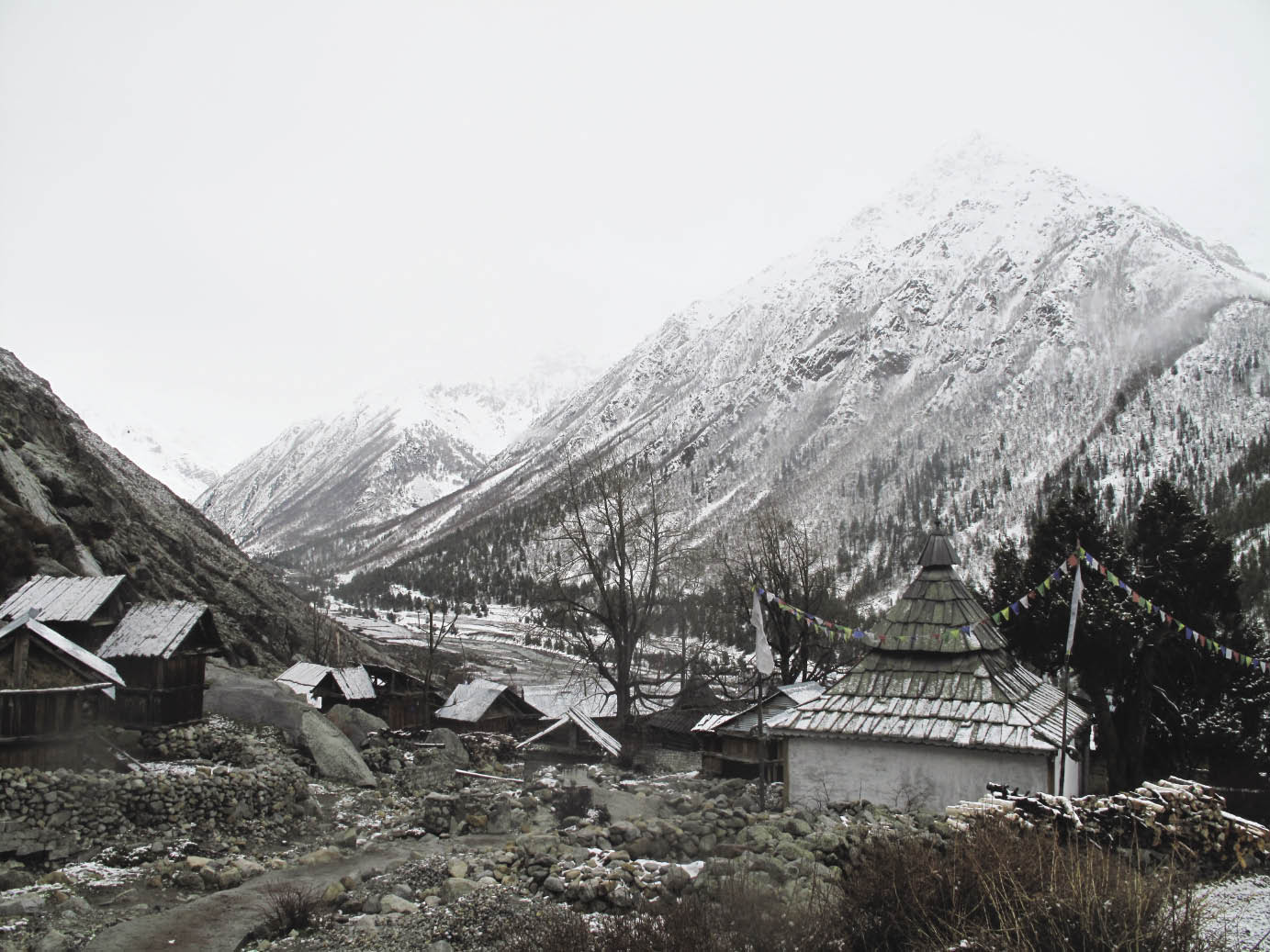Nearly 200 kms from Shimla, en-route to the India-Tibet border, along mountainous roads of the majestic Baspa valley in the Kinnaur district in the Himalayas, one runs into the end of the road in India. Literally. Chitkul enjoys the distinction of being the last inhabited Indian village along the border.
Chitkul, which is perched at an altitude of 3,450 meters above sea level, close to the Mt. Kinner Kailash, is open to the outside world for just half a year and is cut off by snow during the winter months. This is the last spot visitors can enter in India without a permit. The remaining 60 miles to the border are under Indian paramilitary ITBP control.
Chitkul’s climate is harsh, but the tribals are warm to the nature lovers who venture into their hidden paradise. Wearing their traditional green Thapang cap and Chupa dresses, the men, women and children greet tourists with a warm Namaste. Unlike other villages in Kinnaur, most Chitkul resident do not migrate to lower regions during the painfully long winters as they are too remote from the migrating spots. Instead, they store their corn and other dried food to endure the biting cold with their herds of cows and sheep.
Chitkul is the highest village in the valley and the Baspa River meanders through it. The Indian military mans the last check post in India near the village, whose 600 residents crowd into rough wooden houses with basic amenities. The village is home to two temples, one to the Hindu goddess Mathi and the other to Buddha. There are three temples to the local goddess Mathi in the region, dating back 500 years.
At the start of the harvest season, villagers perform rituals to their Himalayan deity and the Nati folk dance. Villagers are mostly engaged in traditional step farming and apple orchards dot the lower side of the village. Chitkul is reputed for producing the world’s best quality potatoes, which fuels the local economy. The ancient Indian-Tibet route, which once traded treasures with Tibet, has been closed for half a century.
The charms of the valley seduce many hikers and trout fishermen in the Spring. However weather is very unpredictable in Chitkul and even in the summer months, snowstorms can invade the night, confining villagers to their wooden homes for long periods. Occasionally villagers have to be airlifted by government helicopters.
Chitkul is an offbeat destination, offering tourists the most spectacular natural trails. The holy pilgrimage by Hindus and Tibetans to the famous Kinner Kailash, the abode of Lord Shiva, starts from Chitkul. But most of all, visitors are awe struck by the sights of snow covered mountains towering majestically into the bright blue sky.


You must be logged in to post a comment Login